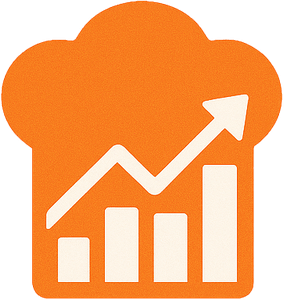When you walk into a bank branch to apply for a business loan, the first thing the loan officer looks for isn’t your menu—it’s your loan purpose.
- Lenders rely on loan purpose to assess risk, loan type, and pricing. For example, a loan labeled as “startup kitchen equipment” might qualify for a government-backed SBA 7(a), whereas “personal debt consolidation” won’t .
- A clear purpose shows you respect their time and have a plan, which improves your credibility in a banker’s eyes.
Step-by-Step: How to
Define Your Loan Purpose Like a Pro Chef
1. Pick a Level of Scope: Strategic, Operational, or Mixed
Strategic: Expansion, remodels, or capital improvements (e.g. opening a patio or a second location).
Operational (Working Capital): Payroll, inventory, stabilizing cash flow during slow months.
Mixed: A combination—e.g. loan covers equipment AND marketing.
Tip: Most branch‑level bankers have preferred loan types built on these categories. Identify the category that matches your greatest need.
2. Break It Down into Sources & Uses (aka Use-of-Funds)
A
void broad language like “for general business purposes”. Instead, mimic this structure:
Source Use Of Funds
$150,000 loan (SBA 7a) Renovate front of house + buy new fryer + raise working capital
Use line items:
- New range (kitchen station): $40,000
- 50‑seat patio expansion: $25,000
- 3 months’ payroll cushion: $15,000
3. Connect the Purpose to Revenue / ROI
Th
is is crucial. The banker wants to know how you’ll repay::
- A renovated patio → more covers / higher average check → 25% projected revenue boost
- New fryer → reduced downtime / quicker turnover → more menus per service
Example: A $25,000 patio expansion served as modular seating, allowing us to add 15–20 covers per shift, increasing average daily revenue by $1,200‑$1,500 per weekend shift.”
4. Use Language Your Banker Understands
Mat
ch their loan categories:
You Say Bank Hears
“Kitchen improvements” VS Equipment financing or SBA 7(a) supported use
“Seasonal cash buffer for lean months” VS Working capital
“Second location in neighboring city” VS 5050 loan or SBA 504 if buying property
5. Share Specific Examples to Build Confidence
Your loan purpose becomes more vivid when tied to real-world chef stories. Use Strong Examples: :
Real-World Mini Case Studies
1. Chicago Restaurant: Patio Loan Success
A C
hicago owner requested a $25,000 SBA 7(a) term loan specifically to build an outdoor patio: furniture + planters + lighting. Because the purpose was narrow, justified, and tied to incremental revenue, the bank approved it quickly.
Loan purpose detail helped simplify their risk assessment
2. Seattle Chef (Personal-Chef Service Pivot)
Chef
David Boyd of Down to Earth Cuisine repurposed a Paycheck Protection Program loan to keep staff on payroll during COVID closures — but he backed it with clear language about reorganizing logistics to offer meal-delivery and cooking classes, which ultimately helped the SBA’s underwriters approve it.
A clear purpose helped convince lenders he wasn’t diverting funds to unapproved uses
3. Sawyer & Co (Austin Cajun Restaurant Section‑108 Loan)
Thoug
h not a small branch loan, this case is instructive: they secured a $519,000 Section‑108 guarantee to purchase & renovate a historic building into Sawyer & Co. Their loan purpose reads like a mini-business plan: acquisition, renovation, FF&E, economic revitalization (45 jobs).
Even with layered financing, clarity around “building purchase + rehab for job creation” helped the City evaluate and package the deal
Template: “Loan Purpose Pitch” for a Branch Meeting
Here’s a sketch you can customize—speak it aloud before you walk in:
“Good morning … I’m Chef [Name], owner of [Restaurant Name]. Today I’d like to apply for a $150,000 small business loan, primarily categorized as:
- Equipment upgrade ($80k): a new soda line and range unit to increase throughput by 1.5× in dinner service.
- Front-of-house refresh ($40k): new floor, lighting, and a 400‑sq‑ft outdoor patio for seasonal seating.
- Working capital buffer ($30k): to cover payroll and ingredient cost volatility during upcoming off-season.
Based on last year’s sales, patio traffic could boost monthly revenue by 12‑15%, while equipment and layout changes combined will reduce labor costs by 8‑10% in prep time. I have financials here and can show you the three‑year P&L forecast that backs this up."”
Reference Checklist: What to Bring to the Meeting
- Written Loan Purpose Statement (just like the pitch above, printed).
- Use‑of‑Funds breakdown (line‑item precision helps).
- Projected P&L / Cash-flow impact chart (limits → ROI; you can use existing business metrics).
- Your kitchen résumé (years operating, staff, concept).
- Collateral or guarantor info (if applicable — especially for equipment or real estate).
Why This Approach Wins Banks over Chefs
- Focused & clear: You respect the banker’s time and make their job easier.
- Data-driven vision: ROI connects your ambition with repayment metrics they understand.
- Low ambiguity: Smart structure reduces the “catch‑all” risk that banks worry about.
- Chefs’ credibility: A 30‑40 aged chef who knows numbers and outcomes signals maturity and avoids the “hobbyist” category.
Key Takeaways
- Loan Purpose matters most. It dictates your loan type, risk assessment, pricing, and approval speed. Broad or vague requests often stall.
- Break it into Sources, Uses, ROI, Repayment capacity. Dissect each use.
- Prep two or three crisp examples of how you’ll use the funds, echoing real chef‑owned businesses ie. upholstery patio, equipment for expansion, menu pivot.
- Align purpose with loan officer categories—SBA 7(a), equipment line, working capital, etc.
- Practice your pitch aloud. Say it before walking in. You’ll sound confident, concise, and organized
With this structure, you’ll deliver the right message to the banker: one that balances your chef’s passion with financial credibility. You’ll also build trust by showing you’re not risking someone else’s money blindly—you’re optimizing for business growth and repayment.
Wishing you success at the branch—and many more full tables.

